EGYPTOLOGY: The Treasures of Tanis
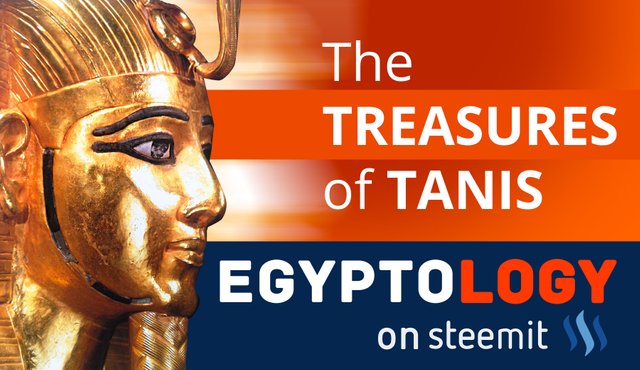
Did you know about the incredible treasures found in an absolutely untouched tomb that can be compared with the finding of Tutankhamun? You probably heard about his famous gold mask, but did you ever hear about the gold mask of Pharao Psusennes I.? Or the amazing silver sarcophagus of Pharao Shoshenq II.? In the following article, you will discover breathtaking artefacts, that might be even greater than anything else - from a historical but also archaeological perspective.
History of Research
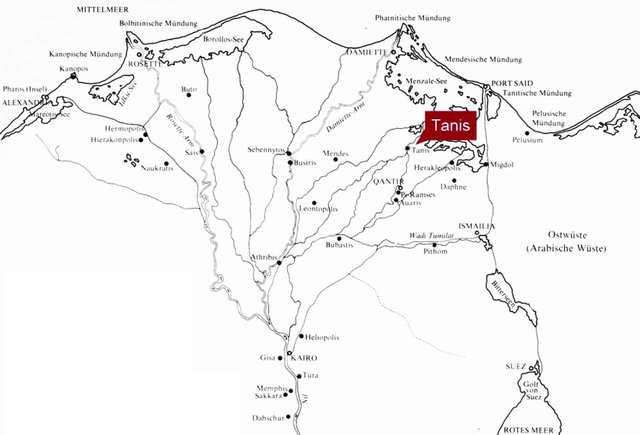
In the end of the 18th century (1798/99), when Napoleon started his military activities in Egypt he sent also scientific expeditions to this country. In the book Description de l'Egypte the site of Tanis was named first in 1809. Tanis is located in the delta and is the place of a huge temple area with a lot of tombs inside! This was a quite unique discovery since tombs normally are placed away from the sacred places.
1860 Auguste Mariette started the first excavation series in the Great Temple and found the famous 400-years-stela.
1883–84 Sir William Flinders Petrie continued excavations in that area and found a lot of inscriptions, obelisks and sphinxes. But in the time of 1939–46, when Pierre Montet was researching in Tanis, he made a spectacular discovery which was similar in importance as the tomb of Tutankhamun: he found the Royal Necropolis of Kings and Queens of the late period of 21./22. dynasty (see the following paragraph) with innumerable treasures in gold and silver. Unfortunately, this was also the time when Europe was shaken by World War II. So, this amazing news found only a subordinate place in the small columns of the newspapers. Montet and his research was mentioned a few times but was forgotten soon.
The Royal Necropolis in Detail
Tanis was the capital of Lower Egypt (delta) in the 21st and 22nd dynasty. The temple area is about 40x60 meters with a necropolis of around 20x12 meters. The following picture shows a 3D model of the sacred buildings with a temenos wall (a wall that surrounds a holy place) and the tombs that were found inside:
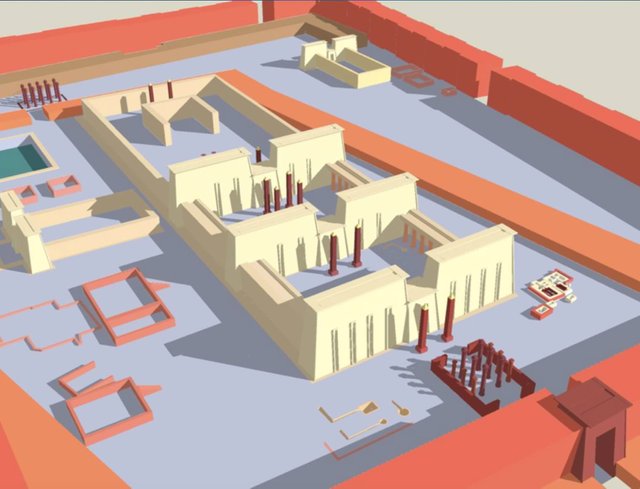
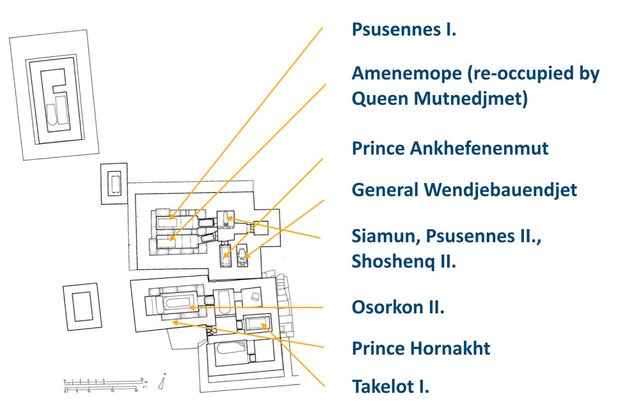
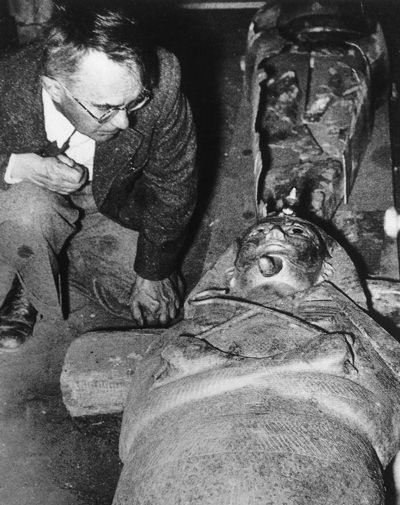
The Treasures
As I told you, in the beginning, the Egyptologists made amazing discoveries. Especially in the tombs of Psusennes I., which was completely untouched, Pierre Montet found a huge number of invaluable objects. An important discovery is that many objects were made of silver. Other than gold, silver was a very rare metal in Ancient Egypt, and therefore even more precious. The silver sarcophagus are typical for the 21st and 22nd dynasty. They are not made of pure silver but of so-called Electron, which is a natural alloy of gold and silver with a small part of copper. It is derived from the greek noun ήλεκτρον and actually means „amber“ or „white gold“, probably because of its colour. Electron was likely to be imported by tradesmen from Mesopotamia and Anatolia (today in Turkey). Beside the silver objects, some interesting objects were found like the toe- and finger-covers shown below. After embalming the dead body of Pharao Psusennes I., they added golden caps with rings and precious gemstones to the hands and feet.
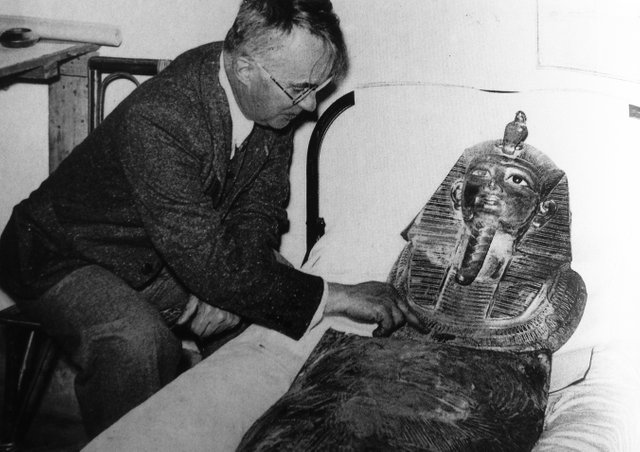
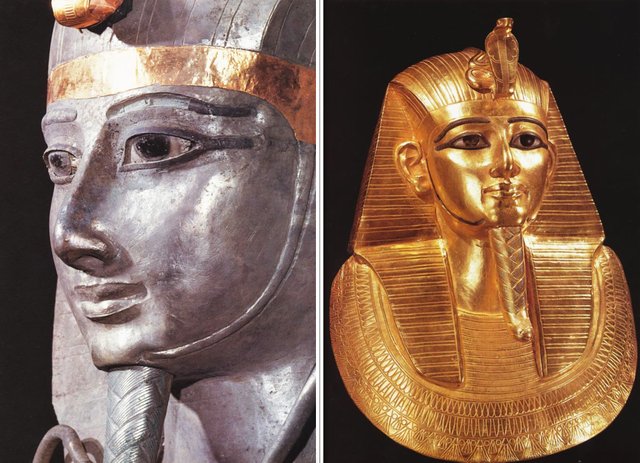
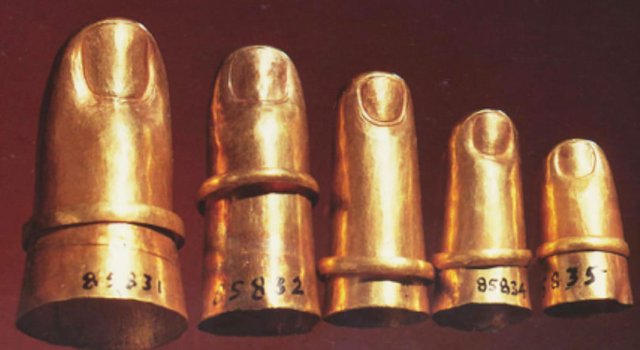

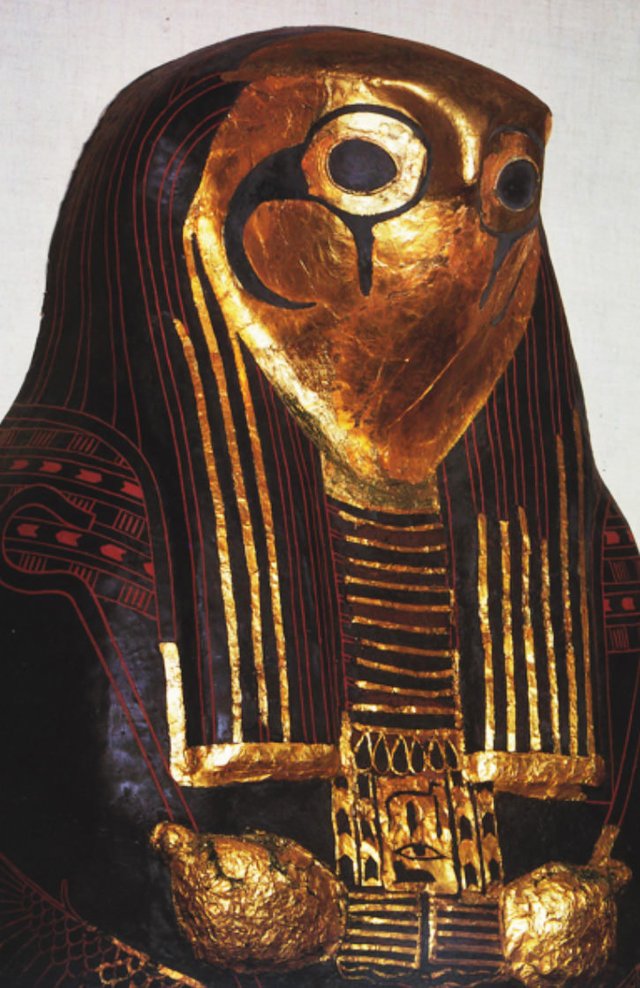
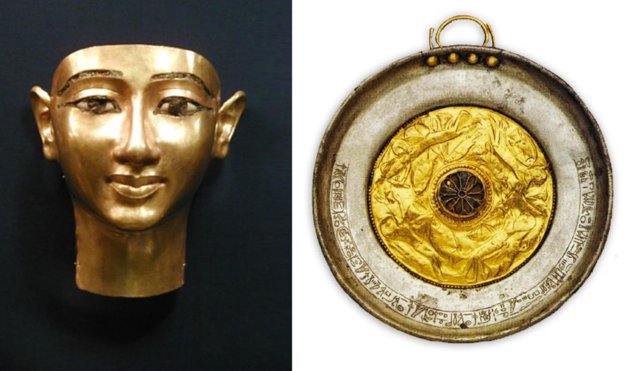
Sources:
Bommas, Martin, Amun von Theben als Ziel von Gottesnähe: Überlegungen zur Königsnekropole von Tanis, SAK 33, 2005, 65—74.
Brier, Bob, Treasures of Tanis, Archaeology, 58/3, 2005, 18—25.
Douglas, Derry, The missing tombs of Tanis, in: Manley, Bill (Hrsg.), The seventy great mysteries of Ancient Egypt, London 2003, 95—96.
Montet, Pierre, La Nécropole royale de Tanis. I, Paris 1947.
Montet, Pierre, La Nécropole royale de Tanis. II, Paris 1951.
Montet, Pierre, La Nécropole royale de Tanis. III, Paris 1960.
Petrie, W.M. Flinders, Tanis, II, London 1888.
Reeves, Nicholas, Royal Tombs At Tanis. Treasures of the Third Intermediate Period, in: Ancient Egypt. The Great discoveries. A year-by-year chronicle, London 2000, 189–193.
Images:
Map and image in the editorial picture: Stierlin, Henri, Ziegler, Christiane, Tanis: vergessene Schätze der Pharaonen, München 1987.
Image 1a: Source
Images 1b, 2–9: Stierlin, Henri, Ziegler, Christiane, Tanis: vergessene Schätze der Pharaonen, München 1987.

If you liked this article, please follow me on my blog @laylahsophia. I am a german Egyptologist writing about ancient and contemporary Egypt, history of science, philosophy and life.
GREAT POSTS @laylahsophia!
The quality of your article is undeniable and can't wait to read and learn more from your savvy interactions with us and the world. You now have a new follower in me. Upvoted and resteemed!
Namaste :)
Thank you so much. Namasté. :)
total faszinierend! ich habe noch nie von Psusennes I. gehört. vielen dank, liebe @laylahsophia.
Gern geschehn! :)
sag mal, könntest du vielleicht einen post über altagyptischen schmuck machen? mich interessiert das sehr, vor allem ringe, siegel, ketten usw. - nur so eine idee von mir :-) lg
Das ist ne coole Idee. Mach ich sehr gerne! :)
ja, das würde mich freuen! man kennt eben, wenn überhaupt, nur die großen objekte, die masken, den thron, alles das, was kiloweise gold und silber enthält. sonnen und mondmetall. aber eben die ganzen kleinen und sehr feinen objekte sind nicht minder einen blick wert.
Da gibts ne ganze Menge, ja. Ich muss das mal zusammen suchen. ;)
Great information @laylasophia. I used to travel often to Mansoura and El Hamoul but never knew of this. Except from "raiders of the Lost Ark". Surprising to find a tomb in an area which could easily be flooded.
Wow, this is really captivating, I never knew Napoleon's involvement in Egypt was to this great extent. Thanks for opening my eyes to this wonderful info. Keep up the good work
Thank you very much. :)
Wow, die Bilder sind echt der Hammer! Den Artikel muss ich noch lesen, aber ich bin so fasziniert von den Fotos. Das waren echte Künstler.
GREAT POSTS @laylahsophia!
The quality of your article is undeniable and can't wait to read and learn more from your savvy interactions with us and the world. You now have a new follower in me. Upvoted and resteemed!
Namaste :)
Very nice work and amazing discovery
https://steemit.com/@abulhasanat
Upvote me,I upvoted back